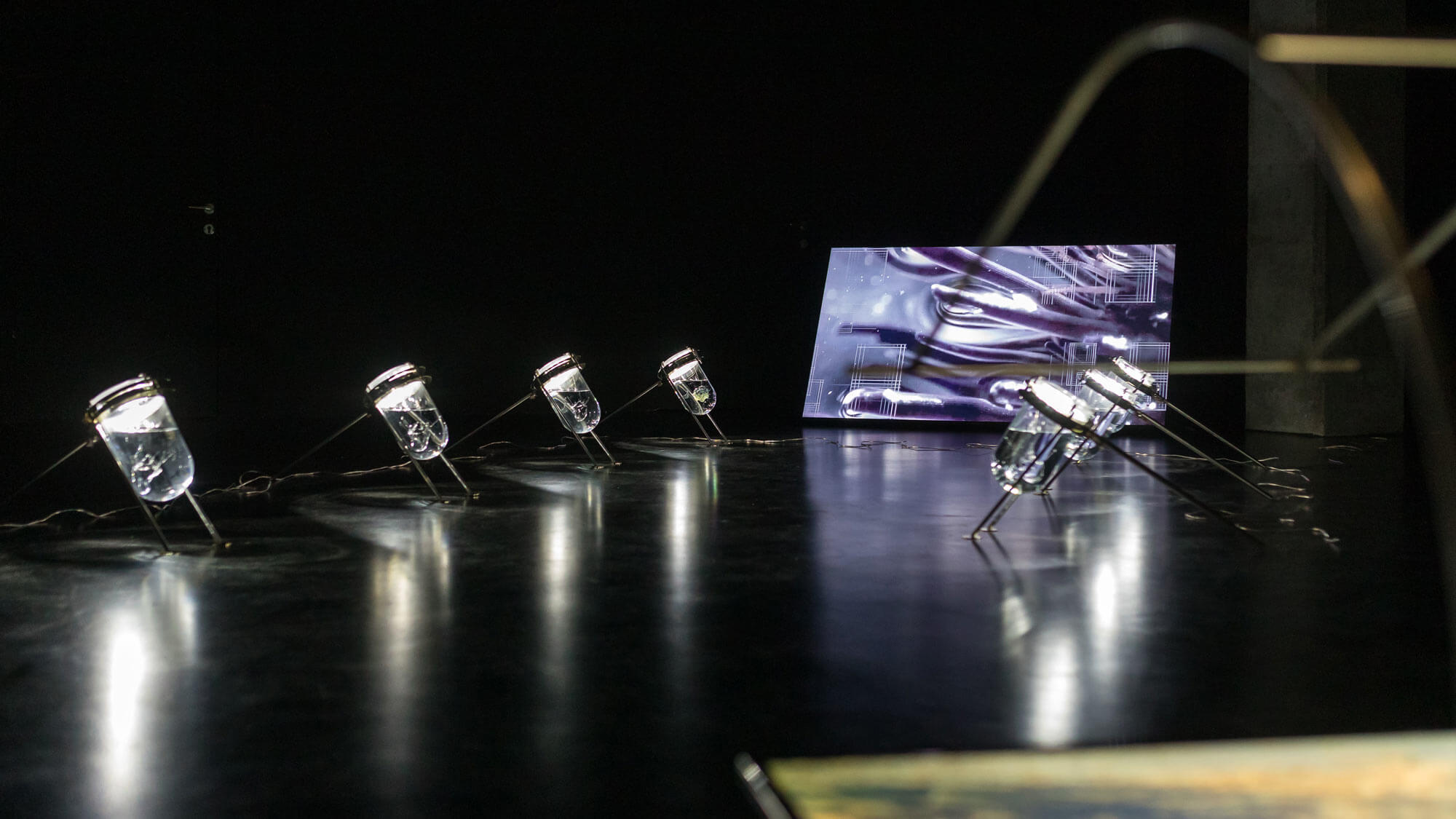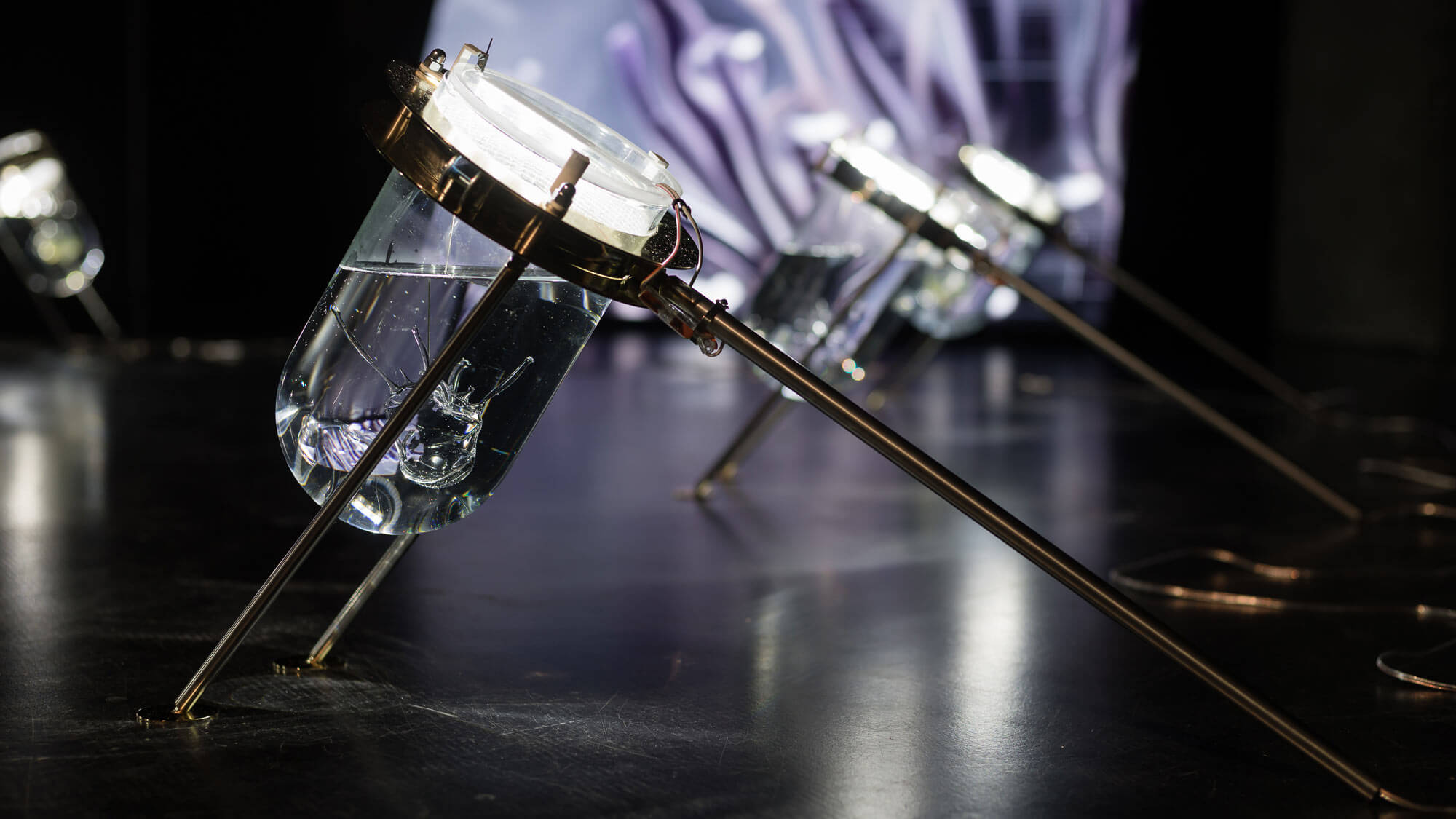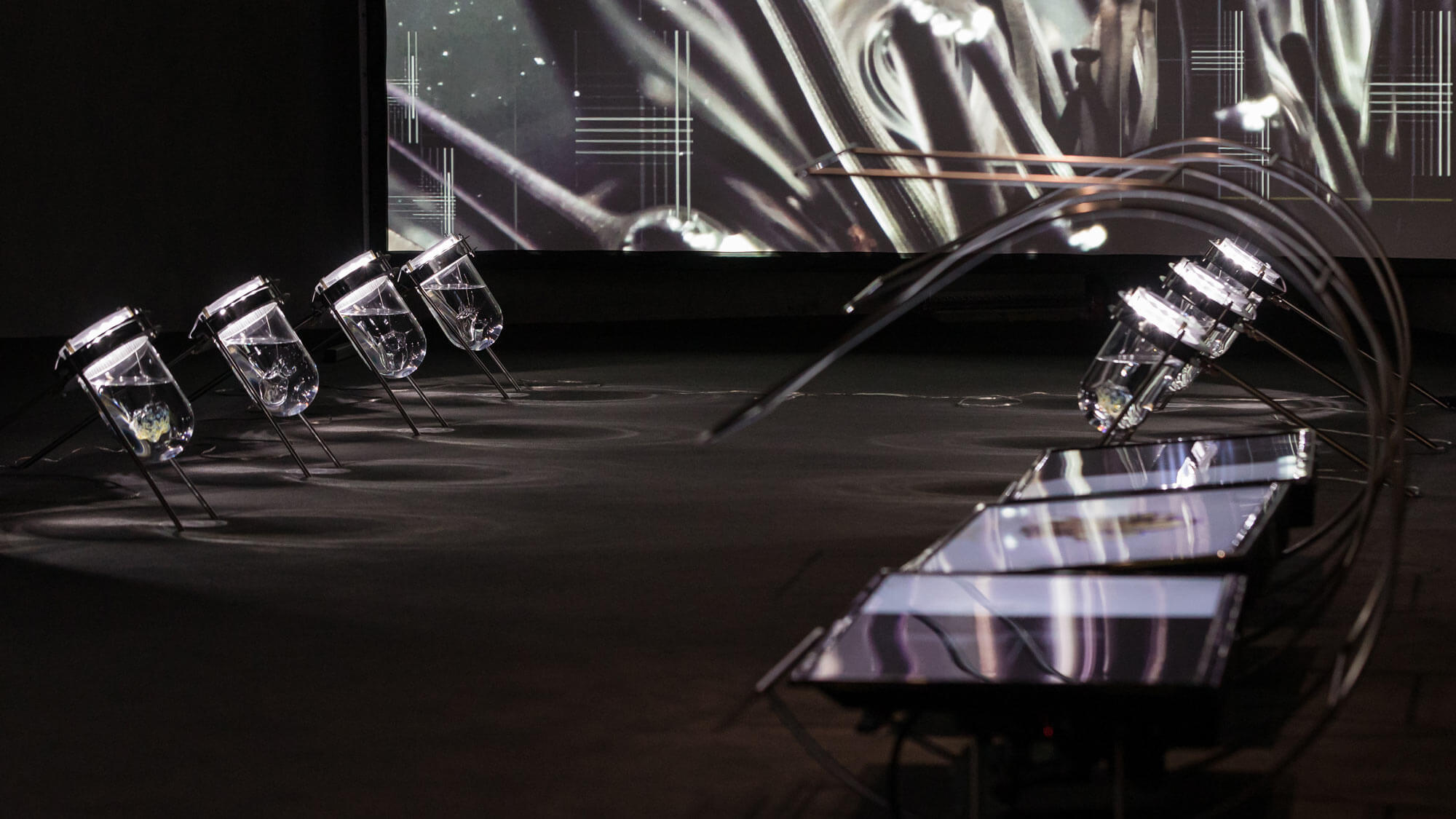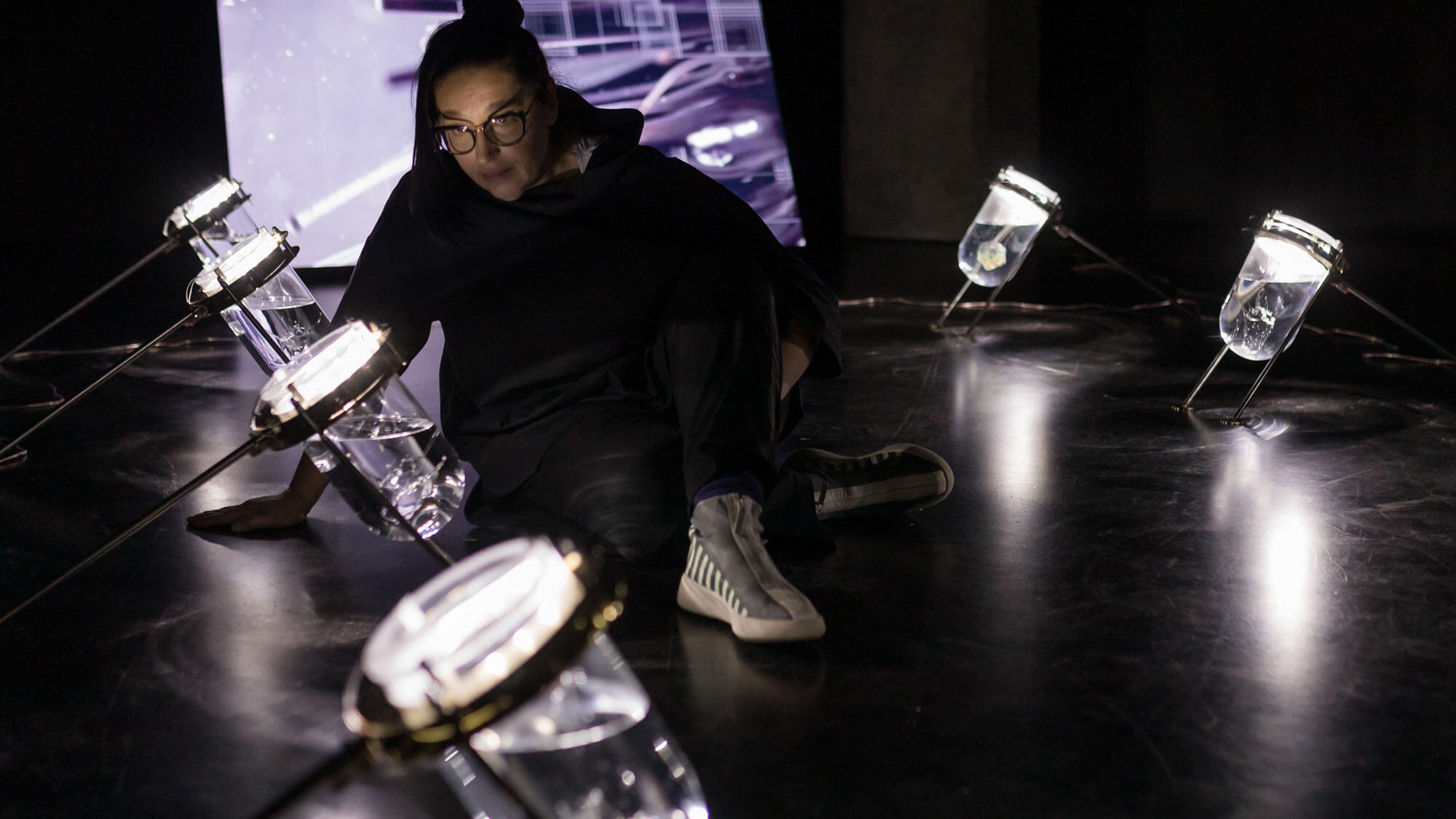Honorary Mention
robertina.net/echinoidea-future-adriatic-sensing-starts4water-zero-pollution-adriatic
Echinoidea Future – Adriatic Sensing explores the biogeological and morphological conditions impacting the sea urchin habitat. Anthropogenic liquid waste threatens their environment, leading to low oxygen levels in seawater. The study focuses on dissolved oxygen flux in coastal areas, revealing pollution’s profound impact on biodiversity. The ongoing dialogue prompts reflection on oceanic changes, transcending ecological concerns to address the geopolitical dimensions of the Adriatic coast.
Artist Robertina Šebjanič, supported by experts Tanja Minarik, Filip Grgurević, and Gjino Šutić, and science advisors Dr. A. Malej, Dr. M. Ličer, Dr. M. Hure, and Dr. V. Kozul, integrates art, technology, and science in this coastal exploration. Sea urchins, as pollution indicators, are vital herbivorous grazers that influence benthic communities. Experiments exposing them to stressors inform the creation of glass blown sculptures, visually representing microscopic research.
The art installation juxtaposes experimental setups with synchronized screens displaying three decades of environmental big data from the EU Copernicus platform. This data, transformed by artificial intelligence, illustrates the South Adriatic Sea’s ecological parameters (temperature, pH, oxygen, and salinity fluctuations). The use of glass blown sculptures and the artistic representation of microscopic research align with the cultural heritage in arts and craftsmanship. Experiments into the foreground enrich the artwork’s multi-dimensional narrative. This interdisciplinary project not only unveils ecological challenges but also emphasizes the need for collective responsibility in preserving the delicate balance of our oceans.
Exploring the stressors of the local/global human footprint, the project demonstrates the resilience of the aquatic species, Echinoidea future – Adriatic sensing acts as an activation of (sy)(e)mpathia
(sympathy and empathy).
Credits
Concept, sound, video editing, execution: Robertina Šebjanič
Production: UR Institute 2021/2022
Co-production: Zavod Sektor, Zavod Studio Aquatocene, PiNA
Production team: Ivanka Pasalic (glassblowing), David Drolc (metal construction), Tanja Minarik (A.I. video support), Miha Godec and Jakob Grčman (technical support)
Scientific advisory: Dr. Alenka Malej, Dr. Matjaž Ličer, Gjino Šutić, Filip Grgurević – UR Institute; Dr. Marijana Hure and Dr. Valter Kozul – the Institute for Marine and Coastal Research University of Dubrovnik
Special thanks to: Martina Gluhan, Marjan Žitnik
The Zero Pollution Adriatic was commissioned by UR Institute within the framework of STARTS4Water, funded by S+T+ARTS, an initiative of the European Commission, launched under the Horizon 2020 research and innovation program.
Biography
Robertina Šebjanič (SI) is an artist/researcher whose work explores the biological, (geo)political, and cultural realities of aquatic environments and the impact of humanity on other organisms. In her analysis of the Anthropocene and its theoretical framework, the artist uses the terms “aquatocene” and “aquaforming” to refer to the human impact on aquatic environments. Her works received awards and nominations at Prix Ars Electronica, Starts Prize, Falling Walls, and Re:Humanism among others.
Web page: robertina.net
Instagram: instagram.com/robertina.sebjanic
Facebook: facebook.com/robertina.sebjanic
X Twitter: twitter.com/roiiroiiro
Jury Statement
While the majority of Europeans have no direct experience with the oceans and seas, ocean life knows far more about us than we do about it. According to scientific studies, there is an understanding that humans are having an extremely negative impact on the oceans, from direct sound and chemical pollution to indirect influence through climate change. While some of these insights stem from the use of organisms such as sea urchins as pollution indicators, they primarily manifest as scientific data too abstract for the general public. The Echinoidea Future – Adriatic Sensing project was developed even further in the STARTS4Water collaboration between the artist, ecologists, cultural organizations, and sea urchins—not as bioindicators but as actual commentators. Such collaboration overcame
anthropocentric and domain-based research practices and brings the agency of an organism that inhabits a human-impacted environment directly to the public. Artwork, therefore, provides not only a medium for sea urchins to tell their story, but is an actual catalyst for our environmental empathy, which is an essential element of future environmental literacy.






